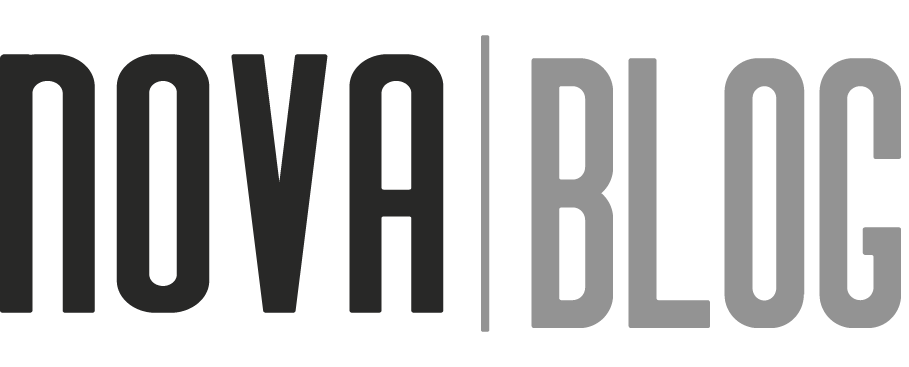More than just posting on social media or running ads, the routine of a business needs to be aligned in all aspects. You need to answer the “why,” “where,” and “how” behind your campaigns, ensuring you’re not just active, but also effective. That is why, no matter the platform, having a solid marketing strategy helps you stay focused and consistent.
A strategy like this can also keep you informed and intentional, especially in an ever-changing landscape where new formats can suddenly become essential to a successful business. Just in 2025, for example, 21% of marketers already credit their biggest Returns of Investments to short-form videos—a very recent format, seen mostly in TikTok and Instagram Reels.
How can you incorporate that into your business plans? Well, a marketing strategy could help you with that.
What is a Marketing Strategy?
A marketing strategy is a structured plan that defines how a business will reach its target audience and achieve specific goals, which can go from increasing brand awareness, to generating leads and boosting sales, and so on.
What is included in a Marketing Strategy?
A strong marketing strategy brings together key elements of your business identity, voice, and vision. It’s more than just deciding where to post or how much to spend: it’s about aligning every decision with your brand’s bigger picture.
From defining who you’re speaking to, to clarifying how you position yourself in the market, each component works together to guide your efforts and track success. A well-rounded strategy ensures that your content, campaigns, and communication all work toward the same goals.
Let’s break down the core aspects that every effective marketing strategy should include.
Main Business Goals
Every marketing strategy should be rooted in clear, measurable business goals. These goals define the why behind your marketing efforts. Are you trying to grow your audience, increase sales, build brand awareness, or generate leads? Your strategy should directly support these objectives, ensuring that every post, campaign, and investment is working toward something meaningful.
Clear goals help guide decision-making, set priorities, and evaluate success over time. Without defined business goals, your strategy lacks direction and marketing becomes busywork instead of a growth tool.
Target Audience
Defining your target audience is the foundation of any successful marketing strategy. Knowing who you’re speaking to helps tailor your message, choose the right platforms, and focus your budget where it matters most. This includes understanding demographics like age, gender, and location, as well as deeper traits like interests, behaviors, pain points, and goals.
A clear picture of your audience guides everything, from the tone of your content to the channels you prioritize. When you speak directly to the people who need what you offer, your strategy becomes more effective, and your brand more relatable.
Unique Value
Your unique value is what sets your brand apart in a crowded market. It’s the reason customers should choose you over a competitor. This can be your product features, pricing, customer experience, or mission—whatever you do better or differently.
A strong marketing strategy highlights this value in every message and campaign. When your unique value is clearly defined, it becomes easier to communicate your brand’s identity and attract the right audience with a compelling reason to engage.
Competitor Analysis
A smart competitor analysis helps you understand the landscape you’re working within. It’s not about copying, it’s about observing what’s working (and not working) for others in your space.
Look at their platforms, content types, messaging, and engagement levels. This gives you insight into market expectations and opportunities for differentiation. By identifying gaps or trends, your marketing strategy becomes more intentional and competitive.
Branding and Tone of Voice
Your branding and tone of voice are essential in building trust and consistency across all marketing efforts. Branding includes visual elements like logos, colors, and typography, while tone of voice shapes how your brand speaks (is it playful? Professional? Bold?).
Together, they create a recognizable identity that resonates with your audience. A clear, consistent brand voice reinforces your message and makes your marketing feel cohesive across platforms and campaigns.
Marketing Budget
A marketing budget outlines how much you can invest, and where. It keeps your strategy realistic and efficient. Whether you’re working with a large monthly spend or a lean DIY approach, allocating funds properly can help you prioritize what moves the needle.
Consider ad spend, content production, tools, and team costs. Your budget should match your goals and evolve with your results, helping you stay focused without overspending.
Timeline of a Marketing Strategy
A timeline turns your strategy into an actionable plan. It helps organize campaigns by season, product launches, or key marketing moments, and gives structure to content planning and execution.
Setting realistic timeframes also helps you monitor performance and avoid rushed decisions. A clear timeline keeps your team aligned, ensures steady content delivery, and gives each campaign room to perform and improve.
Platform Selection
Choosing the right platforms is critical to connecting with your audience. You don’t need to be everywhere, but you have to be where your audience is most active. Instagram, LinkedIn, TikTok, email… each platform has strengths.
Your strategy should define which channels serve your goals best, and how your content should adapt to each one. Strategic platform selection helps maximize reach, engagement, and conversion without spreading your resources too thin.
Content Strategy
Your content strategy is how your message comes to life. It defines what kind of content you’ll create (videos, blogs, emails, Reels), how often you’ll post, and what themes or campaigns you’ll focus on.
Great content doesn’t just fill a feed, it builds relationships and drives action. A strong content strategy aligns with your brand voice, audience interests, and business goals, turning attention into trust and trust into results.
KPIs and Result Tracking
The Key Performance Indicators (KPIs) are how you measure success. Without data, there’s no way to know what’s working. Choose metrics that match your goals, like reach, engagement, leads, conversions, or click-through rates, and review them regularly.
This allows you to pivot when needed, double down on what’s working, and improve with each campaign. A marketing strategy without tracking is just a guess. With it, you gain clarity, direction, and growth.
How to format a plan for Marketing Strategy?
Where to best compile all this information is up to you and your resources. There’s no one-size-fits-all approach, but here are some of the ways to get started:
- Google Docs or Word Document
A written document is perfect for solo entrepreneurs or small teams. Break it into sections like goals, platforms, content ideas, and KPIs. It’s easy to update, collaborate on, and refer back to as your strategy evolves—no design skills needed, just clarity and structure.
- Canva board or an accessible presentation
If you’re more of a visual thinker, using Canva boards, Notion templates, or Google Slides helps map out your marketing visually. You can lay out timelines, moodboards, content calendars, and campaign flows in a way that’s easier to present to your team or share with collaborators.
- Hire a social media team to bring your strategy to life
Sometimes, doing it all alone means something falls through the cracks. A creative team handles the planning, tracking, and execution with the care your brand deserves, especially when your focus is needed elsewhere.
If this sounds like the more complete solution for your business, check out how NOVA can be a great partner for this mission.





